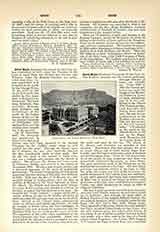

Goodman, GODFREY; b. at Ruthin, Denbighshire, February 28, 1582-3; d. at Westminster, January 19, 1656. He was Anglican Bishop of Gloucester, and passed all his public life in the Protestant Church. His religious sympathies, however, inclined him to the old Faith, and when misfortune and ruin overtook him, late in life, he entered its fold. He was the son of Godfrey Goodman and his wife, Jane Croxton, landed gentry living in Wales. In 1593 he was sent to Westminster School, where he remained seven years under the protection of his uncle, Gabriel Goodman, Dean of Westminster. He was an earnest student and when only seventeen won a scholarship in Trinity College, Cambridge. He graduated there in 1604 and was ordained at Bangor, Wales, shortly after. His first appointment was to the rectory of Stapleford Abbots, Essex, in 1606. From this time ecclesiastical dignities and lucrative emoluments fell rapidly to his share. He was made successively prebend of Westminster 1607, rector of West Ilsley, Berks, 1616, rector of Kennerton, Gloucester, canon of Windsor, 1617, Dean of Rochester, 1620-1, and finally Bishop of Gloucester, 1624-5. In addition he held two livings in Wales, at Llandyssil and Llanarmon. Even when he was a bishop, he was allowed to retain most of these appointments. He became one of the Court preachers and was chaplain to Queen Anne, wife of James I. His leaning towards Catholicity made enemies for him at Windsor and he was reprimanded by the king on two occasions for the views he put forward in his Court sermons. A few years later he was severely blamed for having erected a crucifix at Windsor and used altar-cloths worked with a cross in his own cathedral at Gloucester, and further for having suspended a minister who insisted on preaching “that all who die papists go inevitably to hell”. It is likely that at this time doubts were arising in his mind about the legitimacy of the separation from Rome, and he sought the society of the Catholic priests who were in hiding throughout the country. He was frequently at variance with Archbishop Laud, and in 1640 refused on conscientious grounds to sign the seventeen Articles drawn up by him. He was thereupon arrested, but after five weeks in prison he overcame his scruples. This, however, availed him little, as he was soon impeached by Parliament along with Laud and the ten other signatories of the Articles and was sent to prison for four months. In 1643 his episcopal palace was pillaged by the parliamentarian soldiers and in a year or two he was stripped of all his emoluments. He withdrew now from public life to his small Welsh estate in Carnarvon. It was at this time too, most likely, that he was converted. About 1650 he came to London, and gave himself up to study and research; he was befriended by some Catholic royalists and lived in close connection with them till his death in 1656. Father Davenport, O.S.F., former chaplain to Queen Henrietta, was his confessor and attended him in his last illness. By his will, in which he made a profession of his Catholic Faith, he left most of his property to Ruthin his native town; his manuscripts and books, however, were given to Trinity College, Cambridge. His contemporaries describe him as being a hospitable, quite man, and lavish in his charity to the poor. His principal works are: (I) “The Fall of Man, or the Corruption of Nature proved by the light of his Natural Reason” (1616); (2) An account of his sufferings, 16501 (3) “The two mysteries of the Christian Religion, the Trinity and the Incarnation, explicated” (1653); (4) “Arguments and animadversions on Dr. George Hakewil’s Apology “; (5) “The Creatures Praysing God” (1622); (6) “The Court of King James the First by Sir A. W. reviewed”.
A. A. MACERLEAN

